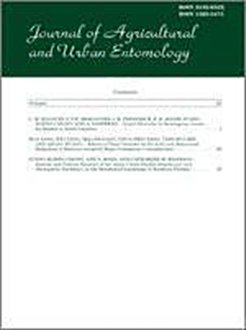Jacobiasca lybica (Bergevin & Zanon) (Hemiptera: Cicadellidae) is a polyphagous pest that damages grapevines in Europe and citrus fruits in Morocco. Management of this insect is based mainly on chemical control, but there is an urgent need to develop an alternative management tool, such as biological control. In this study, we evaluated the predation rate of the first-to third-instar Chrysoperla carnea (Stephens) (Neuroptera: Chrysopidae) on J. lybica under laboratory conditions. The predation rate of each lacewing instar was determined 24 h after placing an individual lacewing larva in a Petri dish containing a freshly detached grape leaf with 15 adult and five immature leafhoppers. The average predation rate by the third instar was 47.8%, which was significantly higher than that of the second instar (31.1%). The predation rate was not different between the first (21.7%) and second instars. The predation rates for leafhopper nymphs (46.7%) were significantly higher than for the adults (29.1%).
How to translate text using browser tools
26 January 2023
Predatory Performance of Chrysoperla carnea (Neuroptera: Chrysopidae) on Jacobiasca lybica (Hemiptera: Cicadellidae) under Laboratory Conditions
Khalid Khfif,
Zakaria Labaioui,
Kseniia Koledenkova,
Abdelhamid Zaid,
Lhoussaine El Rhaffari,
Yves Brostaux
ACCESS THE FULL ARTICLE
It is not available for individual sale.
This article is only available to subscribers.
It is not available for individual sale.
It is not available for individual sale.
biological control
citrus
grapevine
pest
predation





